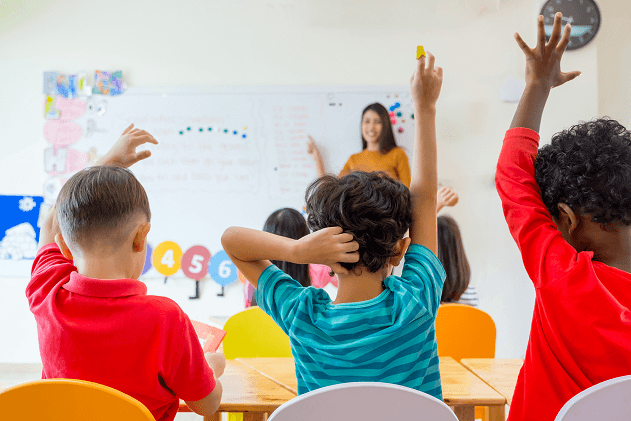When it comes to education, parents and guardians often wonder, “Primary classes start from which class?” Understanding the structure of primary education is vital for ensuring a smooth academic journey for children. This article delves into every aspect of primary education, from defining primary classes to their significance, covering writing tips for SEO, readability, passive voice usage, and presenting information in a user-friendly way with charts and FAQs.
What Are Primary Classes?
Primary classes refer to the initial years of formal education, typically focusing on foundational skills like reading, writing, and arithmetic. Globally, the structure of primary education varies but generally covers classes 1 to 5 or 6. These years form the cornerstone of a child’s academic and personal development.

Primary Classes Start From Which Class?
Primary classes generally begin at Class 1, catering to children aged 5 to 7 years, depending on the education system in different countries. For instance:
- India: Primary education starts from Class 1 and continues to Class 5.
- United States: Elementary school begins from Kindergarten and transitions into Grades 1 to 5.
- United Kingdom: Primary education typically includes Year 1 to Year 6, starting from age 5.
The starting point of primary classes is pivotal as it introduces children to structured learning, discipline, and basic concepts.
Why Are Primary Classes Important?
Primary education plays a critical role in shaping cognitive, social, and emotional skills in children. Key benefits include:
- Foundation Building: Primary classes teach basic literacy and numeracy skills essential for future academic success.
- Social Skills: Children learn to interact with peers and adapt to group environments.
- Critical Thinking: Problem-solving and reasoning abilities are nurtured during this stage.
- Emotional Development: Structured schooling helps children manage emotions, build confidence, and develop independence.
Paragraphs Shape for SEO and Readability
Writing for SEO and readability demands the use of well-structured paragraphs. Each paragraph should focus on a single idea, with concise sentences that are easy to understand. Here’s a quick guide:
- Start with a Topic Sentence: Clearly state the main idea.
- Provide Supporting Details: Expand with facts or examples.
- Conclude or Transition: End with a concluding thought or link to the next paragraph.
For example:
Primary classes play a fundamental role in education. They provide the foundation for literacy and numeracy skills that children carry throughout their academic journey. Beyond academics, these classes foster social and emotional growth, making them a vital phase in child development.
Using Passive Voice for Writing
Passive voice can make content more formal and impartial. However, excessive use may affect readability. Here’s how to use passive voice effectively:
- Use Passive Voice Sparingly: Employ it for emphasis or when the doer of the action is less important.
- Active Voice: Teachers teach primary class students foundational skills.
- Passive Voice: Foundational skills are taught to primary class students.
- Balance Active and Passive Sentences: Use a mix for a dynamic flow.
- Clarity Is Key: Ensure the subject and action remain clear.
Table: Primary Education Structures by Country
| Country | Primary Classes Start From | Primary Age Range | Grades Covered |
|---|---|---|---|
| India | Class 1 | 6-10 Years | Classes 1-5 |
| United States | Kindergarten/Grade 1 | 5-11 Years | Grades K-5 |
| United Kingdom | Year 1 | 5-11 Years | Years 1-6 |
| Australia | Prep/Foundation Year | 5-12 Years | Foundation to Year 6 |
| Canada | Grade 1 | 6-12 Years | Grades 1-6 |
Chart: Primary Class Education Flow
Here’s a visual representation of how children progress through primary education:
Good Readability Practices
Ensuring good readability makes content more engaging for readers and SEO-friendly.
- Use Short Sentences: Aim for 15-20 words per sentence.
- Break Content Into Sections: Use headings, bullet points, and tables for better organization.
- Write in Simple Language: Avoid jargon or complex words.
- Incorporate Transition Words: Use connectors like “therefore,” “however,” or “for example” to enhance flow.
- Optimize for Flesch Reading Ease: Aim for a score above 60.
FAQs: Primary Classes Start From Which Class
1. At what age do children start primary classes?
Children typically begin primary classes between the ages of 5 and 7, depending on the country and its educational structure.
2. How many years are covered in primary education?
Primary education usually spans 5 to 6 years, covering foundational learning.
3. What is taught in primary classes?
Core subjects like mathematics, science, language, and social studies are taught alongside physical education, arts, and moral values.
4. How do primary classes differ worldwide?
While the age range and subjects are similar, the grade structure and terminology vary. For instance, “Class 1” in India equates to “Grade 1” in the U.S. or “Year 1” in the UK.
5. Why is primary education compulsory?
Primary education ensures every child acquires basic literacy, numeracy, and life skills, contributing to personal and societal growth.
Conclusion
Understanding when and where primary classes begin helps parents prepare their children for a structured academic journey. Primary education is not just about academics; it is a critical phase that nurtures holistic development. By ensuring the content is well-structured, SEO-optimized, and easy to read, educators and writers can effectively communicate essential information to their audience.
